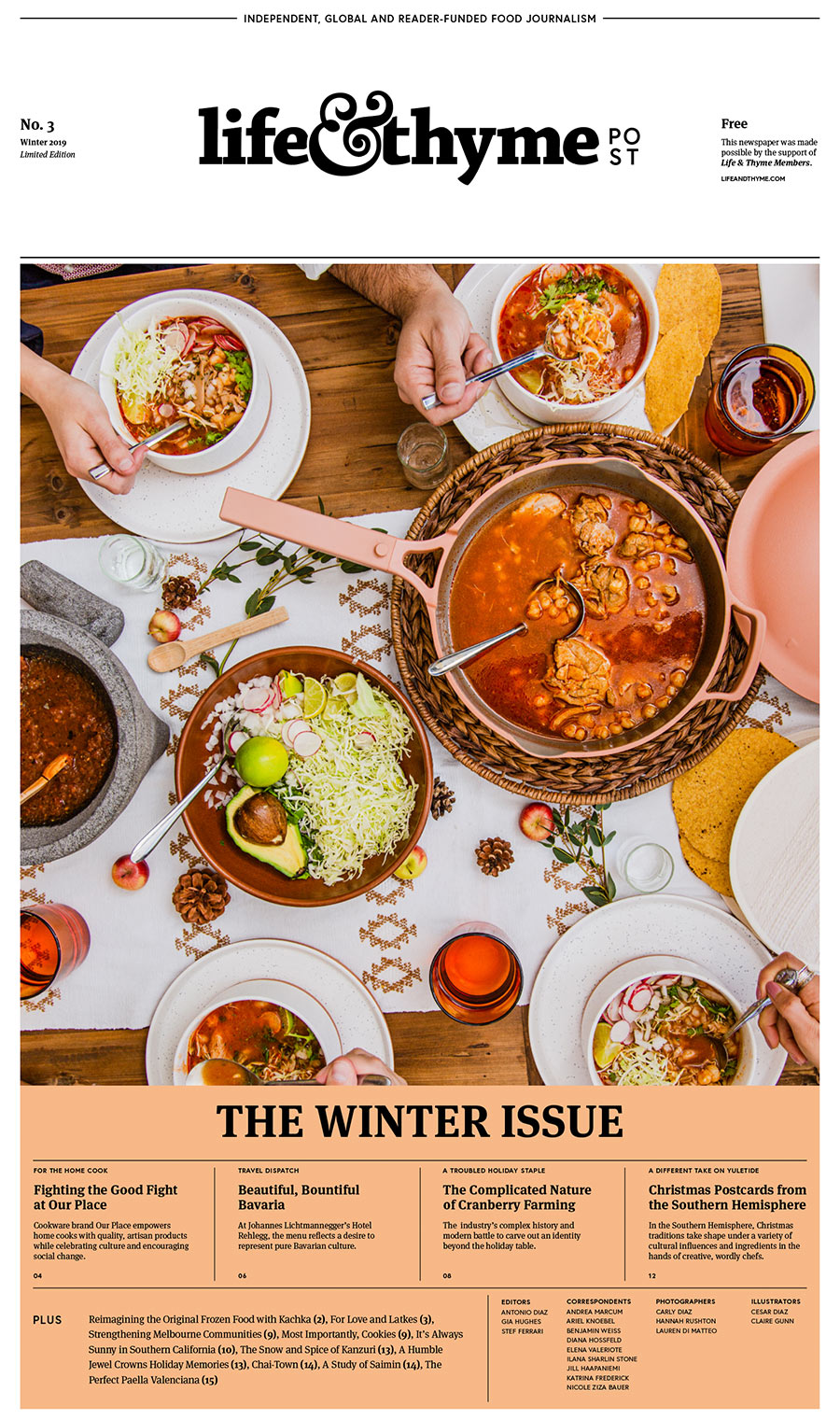
This story can also be found in The Winter Issue of Life & Thyme Post, our limited edition printed newspaper for Life & Thyme members.
There is just one place in the world where the coldest day of the year is associated with a burst of color and the promise of heat: Niigata, Japan.
On or around January 21 of each year, patches of perfectly white snow within the Niigata Prefecture along the west coast of Japan’s main island, Honshu, are blanketed in bright red chili peppers in a process known as yuki sarashi. It is one of many steps involved in the making of kanzuri, a fermented chili paste that is uniquely connected to this region.
While kanzuri is not easily found elsewhere, a small amount of it regularly travels across the vast expanse of the Pacific Ocean and turns up in a rather unlikely place: Las Vegas, Nevada. Deep within the Mojave Desert and far from any snowy landscape, flavors born of winter in Japan can be enjoyed at the restaurant Momofuku, thanks to Executive Chef Michael Rubinstein.
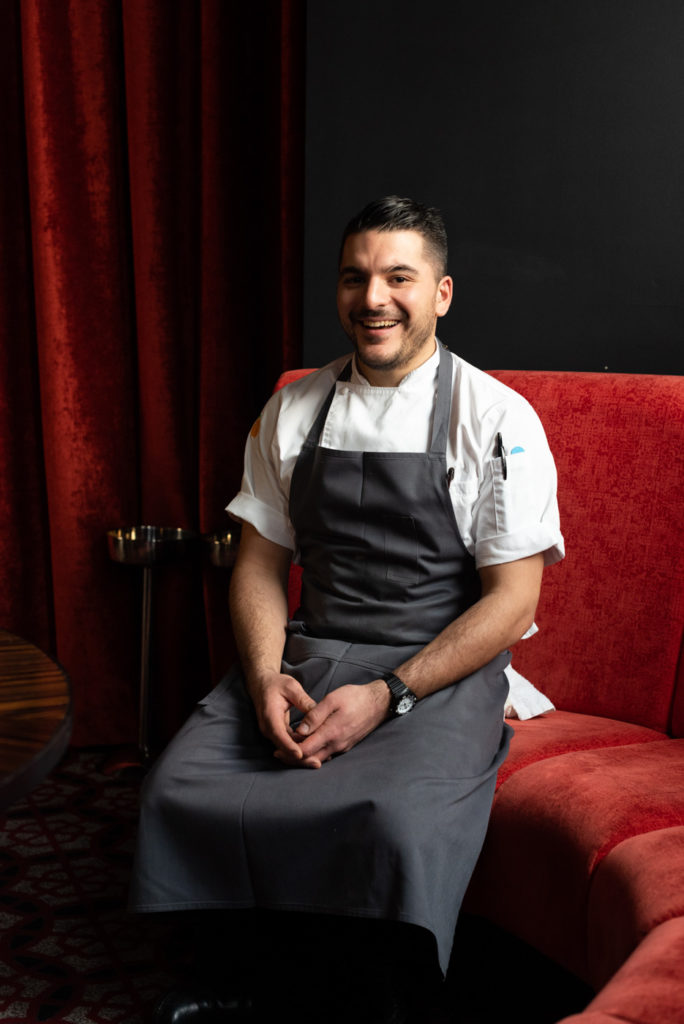
Rubinstein first came across kanzuri about seven years ago. He recalls, “The chef who introduced it to me had incorrectly explained it as a red version of yuzu kosho, so when I tried to track it down years later, I had some difficulty.” Yuzu kosho is another variety of fermented chili paste produced in Japan. While the two products contain similar ingredients, the production process is very different and, most importantly, yuzu kosho is not defined by a sense of geographic specificity in the way kanzuri is.
Kanzuri is made from just a few traditional Japanese ingredients: togarashi red chili peppers (grown locally in Niigata Prefecture), the rind of yuzu (a highly aromatic, tart citrus fruit), salt and koji (rice mold best known for its use in making sake and miso). Together, these ingredients create, as Rubinstein describes it, “a citrusy, slightly salty, slightly funky, thick, brick-red paste” with “a bright aroma and a flavor that is unlike anything else.” When compared to yuzu kosho, Rubinstein finds kanzuri “less salty, a little more chili-forward, with a kind of floral nature to the nose.”
I reach out to Hikaru Minemura, branch manager at Las Vegas Mutual Trading LLC (which supplies kanzuri to Momofuku) to better understand the intricacies of kanzuri production. From the moment the chili peppers start to grow to the packaging of the final product, the entire process spans several years.
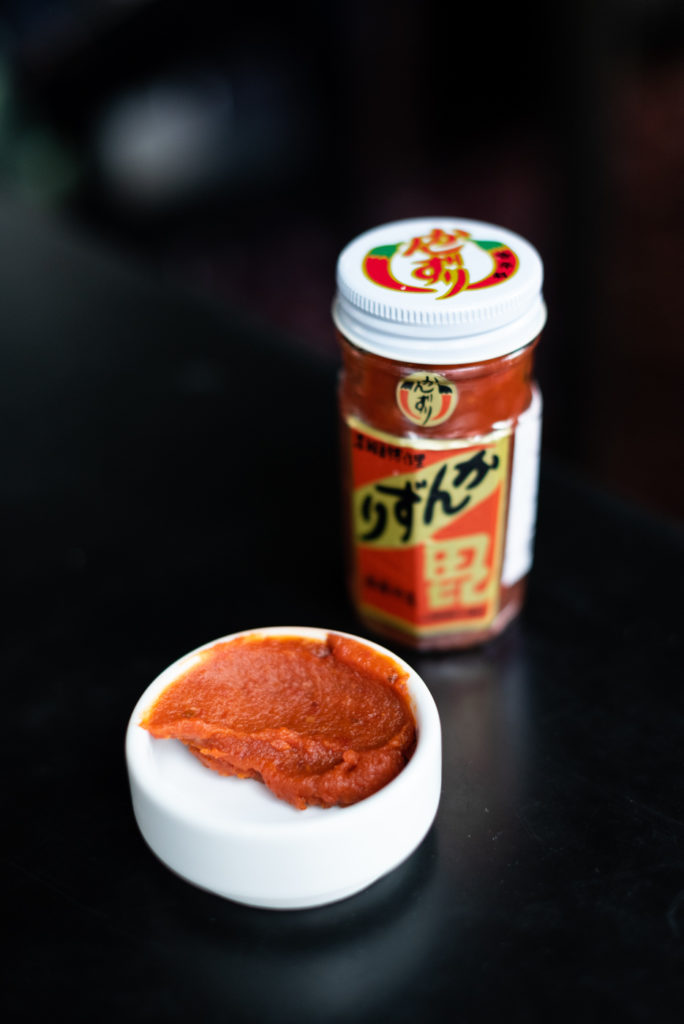
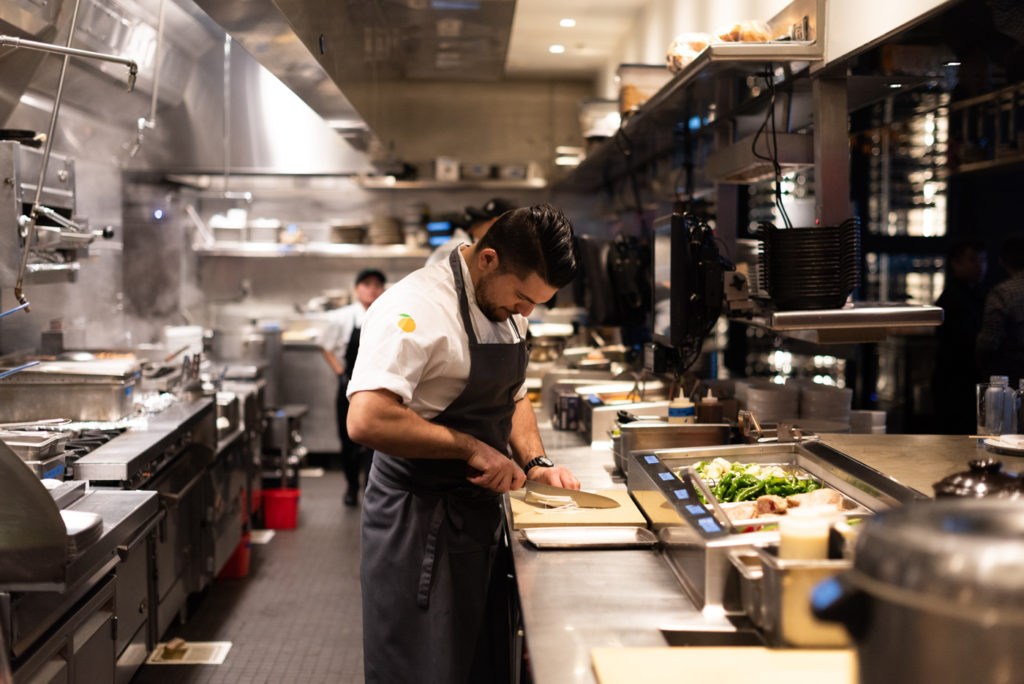
Minemura explains, “From April, they start producing the chili. They use the seed from the previous year. Around August to November, they harvest the chili. After they wash it, they soak it in water with sea salt until January.” Then, on the coldest day of the year, it is time for the phase that truly defines kanzuri, yuki sarashi, which I am told translates to “leave on the snow.”
During the yuki sarashi stage, the pickled chilies are then strewn over the snow, turning a white landscape red for three to four days. Minemura says, “This process is very important because it will take out some salt from the chili and balance the flavor, and makes its spiciness much milder.”
Rubinstein reveals that chilies are not the only food to undergo yuki sarashi. “This is a preservation technique they use in the North of Japan also to preserve root vegetables throughout the winter,” he says. Minemura adds that this method is also used on woven cloth, including those destined for kimonos, in order to achieve a particular color. This practice of snow-bleaching is so deeply rooted in the history of the Niigata Prefecture that it is recognized for its role in making traditional fabrics as part of the Intangible Cultural Heritage List of the United Nations Educational, Scientific and Cultural Organization (UNESCO).

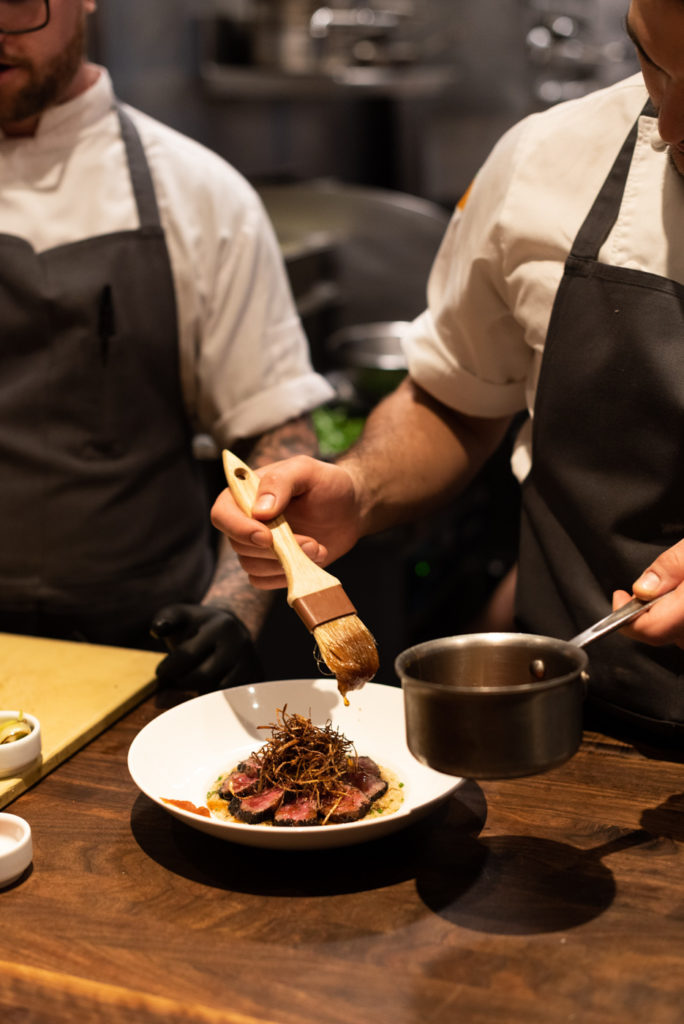
Returning to kanzuri, Minemura points out, “It is very easy to say ‘leave the chili on the snow,’ but the actual work is much more intense. Snow will cover those chili completely, so after three days, someone needs to dig them out of a depth of even four feet of snow.”
Once collected, the peppers are mixed with yuzu zest, salt and koji, then put into barrels where they will ferment for three years. Minemura observes that this is not a hands-off period: “During this time, they need to constantly mix and move them around so they are equally fermented.”
The paste will then undergo another stage of yuki sarashi. “At the end of the third year, they will put the containers on the snow for two months, from November to December,” says Minemura. He claims this exposure to the “natural cold” of the outdoors is one of the most important components of making good kanzuri.
To learn more about the history of kanzuri, Minemura connects me with Kanzuri LLC, which he says is “the only company in the world” making and selling this product, and acts as a translator for an interview with Akihito Tojo, the current president of Kanzuri LLC.
Tojo explains, “Kanzuri was originally made in each family in this area. Each house had their kanzuri at home as preserved food.” However, after World War II, he says, the Japanese lifestyle improved and “people did not want to make kanzuri at home because it was a lot of work.”
In 1966, Tojo’s grandfather, Kuniji Tojo, founded a company to produce kanzuri because, according to Tojo, “he wanted to keep their regional food for the future” and “introduce kanzuri in other areas of Japan.” His father, Kuniaki Tojo became the second president of the company and registered the name as a trademark “to protect the kanzuri name from bigger companies.”
Tojo recalls, “About fifty years ago, when Kanzuri LLC was established, nobody wanted to try our product. It was really a hard time.” Tojo says part of the problem was that “we did not understand the mechanism of the fermentation at all,” but that a turning point came when “we could control koji and our product gained not only spiciness, but also sweetness.”
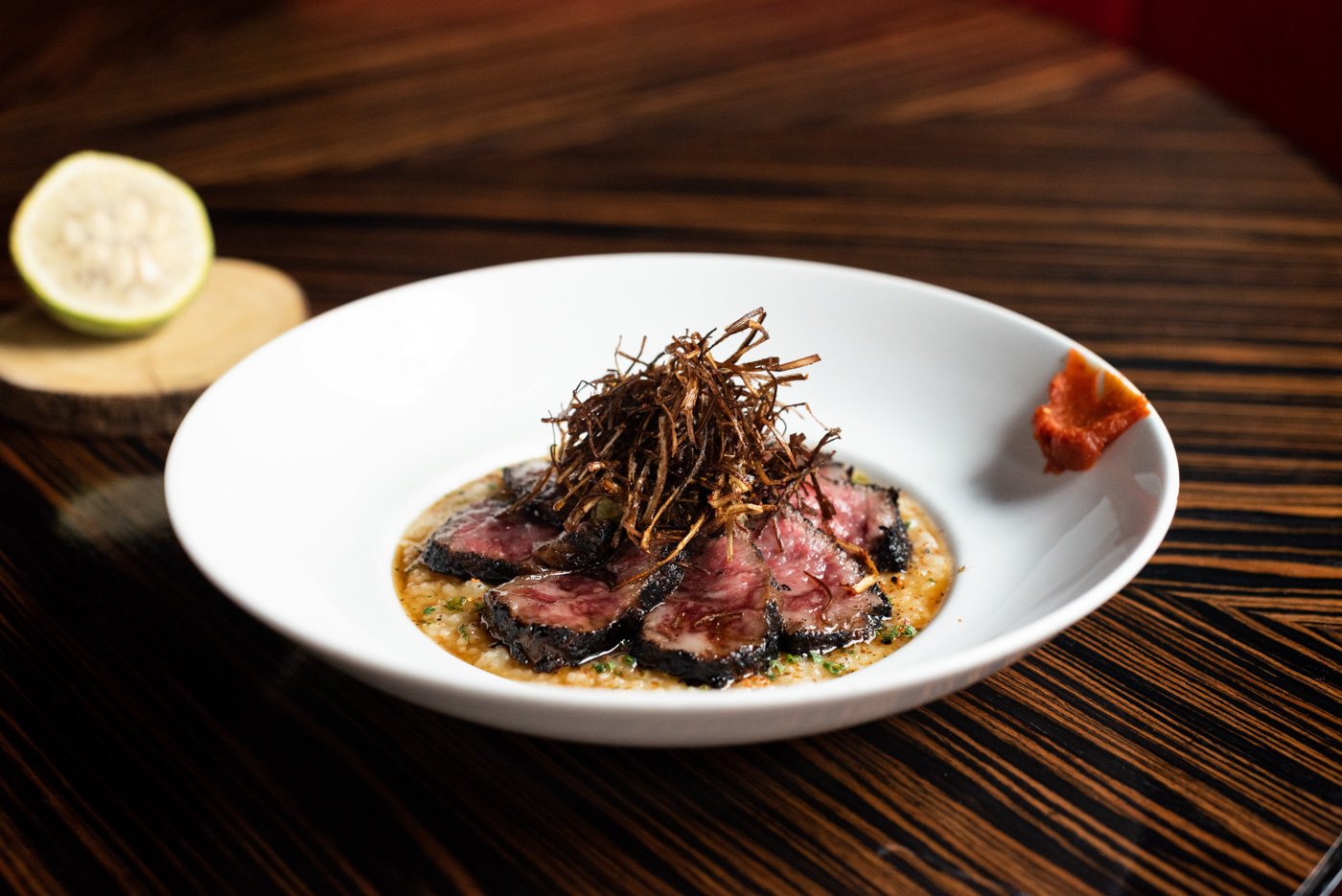
Little by little, the company began to attract new customers, which eventually presented its own challenges. “The production of kanzuri takes three years. We got more customers who wanted to buy kanzuri, but our production could not double or triple. It took a while to catch up to the needs,” remarks Tojo. Because kanzuri-making relies heavily on processes that must be done by hand, it has not been easy for the company to scale up. Today, Kanzuri LLC annually produces about fifty tons of kanzuri.
When it comes to getting a portion of the limited amount of kanzuri made each year, Rubinstein comments, “The product has some pretty tight quantity restrictions.” However, this is not to say there is much competition for kanzuri coming from other restaurants in the U.S. Rubinstein says, “I’ve never actually seen it written on any other menus besides ours.” Even within the Momofuku Group, which was founded by Chef David Chang in 2004 and has restaurant locations throughout the world, it is only Chef Rubinstein’s Momofuku in Las Vegas that offers a menu featuring kanzuri year-round.
Rubinstein uses kanzuri to flavor another Japanese specialty, A5 Wagyu beef, which is internationally known for its premium quality. Rubinstein explains, “We rub the outside of the beef in a thin layer of kanzuri paste and then grill it. That paste slowly caramelizes as it grills and it’s slightly salty, so it seasons the beef really nicely and produces this incredible color, aroma and crust on the beef.”
While kanzuri is an essential element of this dish at Momofuku and is incorporated into the cooking process, Rubinstein says, “The most common use for kanzuri is as a condiment to spice up another dish, for example, as a small dip on the side of agedashi tofu.” Minemura agrees and mentions that he also enjoys kanzuri with sashimi, ramen or shabu shabu (a Japanese hot pot dish). Tojo comments that it is perfect with pickles or miso soup.
However one chooses to enjoy kanzuri, it is easy to understand how this pepper paste prompts passion in all those who taste it, inspiring the Tojo family to preserve its traditional production in Niigata and Rubinstein to seek it out for the Momofuku menu. Whether savored near to the snowy space where it begins and ends its fermentation process or many miles away, the taste of kanzuri evokes the heat of chili peppers, the cold of winter, and the essence of a place like nowhere else in the world.





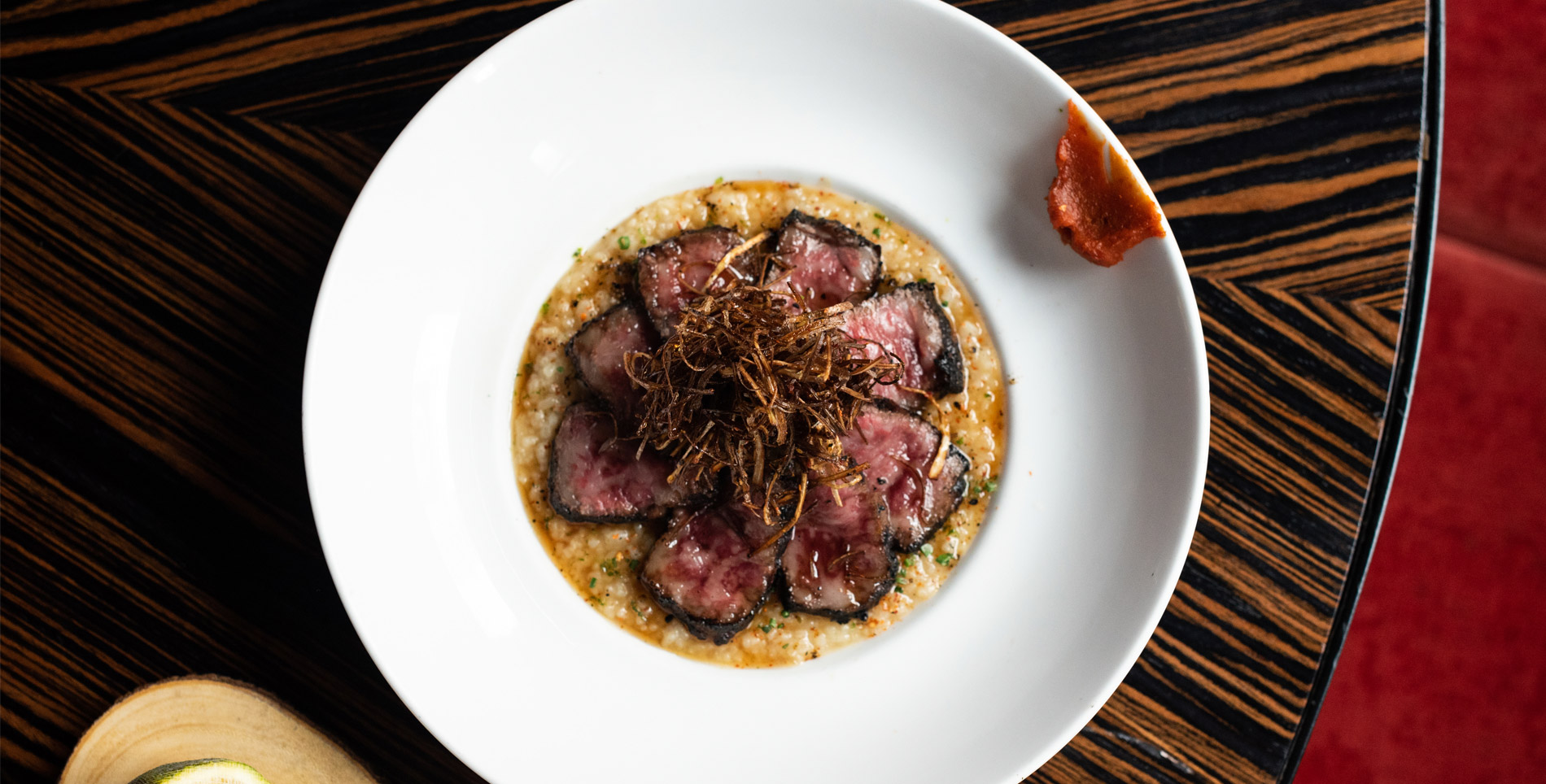

Our comments section is for members only.
Join today to gain exclusive access.